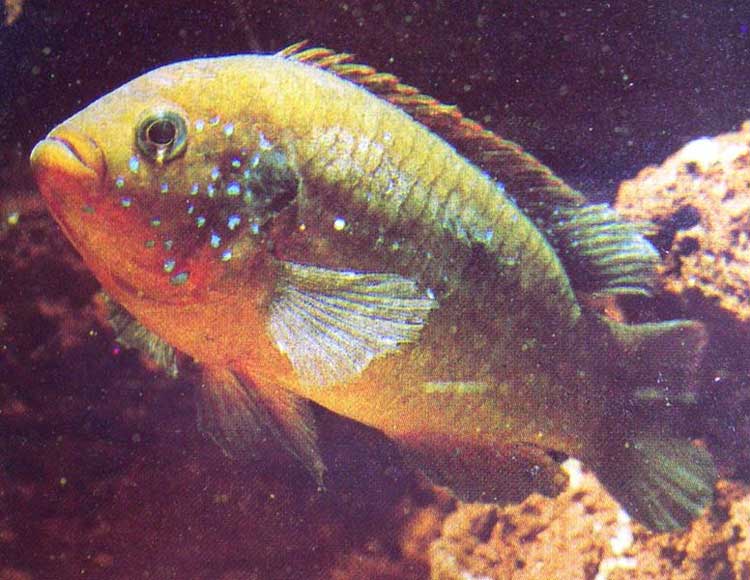Hemichromis bimaculatus Cladus: Eukaryota ----- The African Jewelfish, also known as Jewel Cichlid or JewlFish, is from the family cichlidae, and can grow up to 6 inches long. The origin for the African Jewelfish is in the Nile river, Niger river and Congo river. It's originally from Africa and is the most beautiful, bellicose, aggressive and eager to fight, of the cichlids. There are many different species of the Jewelfish. All different species behave the same and have the same conditions. The African Jewelfish is not a community fish and cannot have any other fish in a tank with them. Due to them being so beautiful many people like to have them as pets. This fish is Agressive and Prays on other fish. The African Jewelfish's origin is in Africa, hence its name. The are found in high numbers in the rivers of west Africa, but have also spread to areas of the middle east, such as Iran, and also to parts of South America. Just recently, they have been discovered in areas of North America around the Gulf Coast, in states such as Florida and Alabama. Naturally they can be found in creeks, streams, lakes, and rivers. Because it is from Africa, it needs soft and a bit more acidic water in order to stay alive in captivity. It lives in water that is partly salt water and partly fresh water and is in a tropical location because it prefers a water temperature of 75 to 85 degrees. When in captivity, the African Jewelfish must be kept only with others of its. Reproduction When the African Jewelfish is ready to breed, they will turn a deep red color to let the male know. The male and female will bond or jawlock and the male will release sperm on the eggs. The female will then lay the eggs on a flat surface. The female will protect her eggs and will kill anything that comes in close proximity. In a couple of days the eggs will hatch and the female will still protect them. The female can reproduce every three weeks. Jewel fish are 3 to 4 to 10 cm long. Diet The African Jewelfish are carnivorous. They feed on insects, crustaceans, and Caridina. Caridina are associated with shrimps and prawns. African Jewelfish can also eat some plants, such as algae and other weeds, as well as debris. When in captivity, African Jewelfish can live by you feeding them varied diet of frozen, live, flakes and pellets as they usually accept mostly all forms of fish food. The also eat algae wafers and shrimp pellets. They can be easily compared to the bottom feeding fish in an aquarium, as they like to eat the algae and other depris that forms in the fish tank. African Jewelfish are also known to eat their own young because they are carnivorous. References
Source: Wikispecies, Wikipedia: All text is available under the terms of the GNU Free Documentation License |
|

